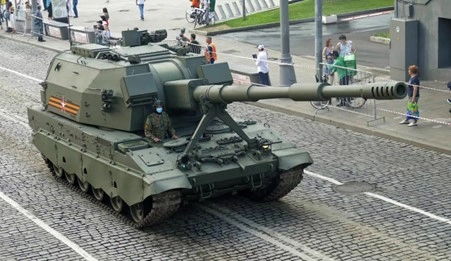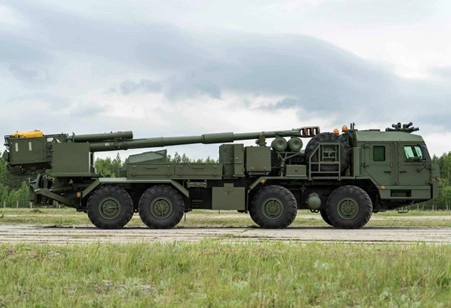The press office of the Rostec Corporation said that the enterprise was about to begin mass production of two 152mm self-propelled artillery systems – the 2S35 Koalitsiya and the 2S43 Malva self-propelled weapons.
Based on the difficulties Russia seems to have had in producing, maintaining and repairing existing in-service systems, this seems little more than another example of over-optimistic announcements made by Moscow’s weapons manufacturers.
JOIN US ON TELEGRAM
Follow our coverage of the war on the @Kyivpost_official.
The continued appearance of obsolete Russian tanks, armored personnel carriers and field artillery bears witness to the unlikelihood that it will have the ability to start producing new equipment, at least in the short term.
This is not the first time that an announcement of the readiness to deploy the weapons has been made.
Russia’s Minister of Defense, Sergei Shoigu, said in May: “The country's leadership has set defense enterprises the task of increasing the pace and volume of production in a short time.”
In response a director of Rostec, Vladimir Artyakov, said in August that the corporation had begun the mass production of the systems in advance of completion of the government’s tests were completed.
He said: “Serial production, as well as the production of a transport and loading machine, has already been deployed.”
Let’s have a closer look at the two weapons, which would undoubtedly enhance Russia’s military capability if fielded.

France to Host European Army Chiefs Tuesday on Ukraine Support: Source
2S35 Koalitsiya (Coalition) – SV
 2S35 Koalitsiya seen at Moscow parade in 2015, Photo: screenshot from Russian media
2S35 Koalitsiya seen at Moscow parade in 2015, Photo: screenshot from Russian media
The 2S35 Koalitsiya-SV is intended to be the successor of the 2S19 Msta-S and other aging Russian 152mm artillery systems but incorporates many of the components from these earlier systems.
It first appeared as an “over and under” twin-barreled demonstrator in 2006 using the same chassis as the 2S19. It supposedly had two fully automatic ammunition selections – handling and loading systems which gave a high rate of fire at 16 rounds per minute.
This unique design was soon abandoned and a new, single gun prototype appeared in 2013 with a first batch of 12 being produced in 2014 and handed over to the military for evaluation in the following year.
It made its first public appearance at the 2015 Victory Day parade in Moscow.
These early prototypes had a number of technical problems and so it was not until three years later that the “finished article” was handed over.
Russian military acceptance trials were programmed to be completed by 2022 but were held up by the Russian full-scale invasion of Ukraine and the imposition of sanctions.
Although the Koalitsiya visibly resembles the older 2S19, it is a totally different artillery system. Its turret is unmanned and uses a fully automated ammunition loading and handling system based on the original prototype.
The howitzer is said to use a modular charge system allowing it to fire a wide range of ammunition, including standard high explosive and cluster rounds giving it a range of 30 km or 40 km with a rocket-assisted projectile (RAP).
Rostec claims to have developed a new long-range precision-guided round which has a maximum range of 70 km and high level of accuracy.
The 2S43 Malva ("Malva" is a type of flower)
2S43 Malva self-propelled artillery system, Photo: Military today / open source
Looking suspiciously similar to the French Caesar artillery system, the Malva is fitted with the same 152 mm gun as the 2S35 Koalitsiya-SV.
It is said to have a maximum range of only 24.5 km., which is less than both the 2S5 and 2S19 weapons it is slated to replace. There is currently no information on whether it will be provided with or could use the extended-range ammunition available to the 2S35.
Its gun has limited traverse, 30 degrees on each side, and only has armor on the crew’s cab, which gives protection of the crew against small arms fire and artillery shell splinters only.
The 2020 prototype was only designed for manual loading of the gun, although it is believed that a load-assisting system will be provided with production models.
It has a probable maximum rate of fire of up to 7 rounds per minute and carries a total of 30, ready-to-use projectiles with associated charges. It can be used in direct fire mode.
The system is based on the BAZ-6910 8×8 wheel high mobility vehicle chassis. It weighs 21 tons, unloaded, or 32 tons with its full 30-round complement. It has a top road speed of up to 80 km/hour with a range of 1000 kilometers.
You can also highlight the text and press Ctrl + Enter












